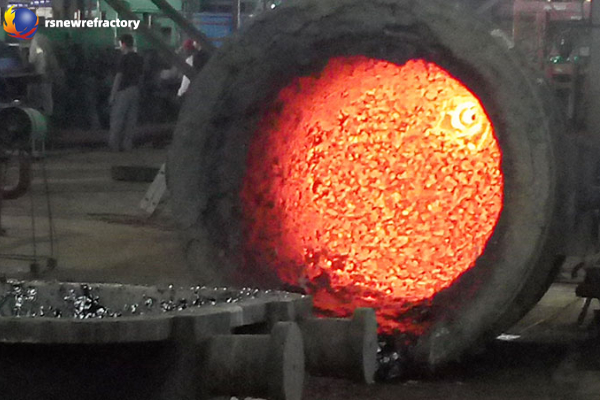Refrakter sıkıştırma karışımlarının sınıflandırılması
Refrakter sıkıştırma karışımları, sıkıştırma yoluyla oluşturulan amorf refrakter malzemelerdir. (manuel veya mekanik) ve normal sıcaklığın üzerinde ısıtılarak sertleştirilir. Refrakter sıkıştırma kütlesi refrakter agregattan oluşur, pudra, bağlayıcı, ve orantılı katkı maddesi, ve çarpışarak inşa edildi, Yani buna refrakter çarpma kütlesi denir. Refrakter agregatın karıştırılmasıyla yapılır, pudra, bağlayıcı, veya belirli bir sınıfla katkı maddesi, su, veya diğer sıvı.

Refrakter sıkıştırma karışımlarının sınıflandırılması
Birçok tür çarpma malzemesi var. Malzeme yüksek alüm içerir, kil, Magnezya, dolomit, zirkonyum, ve silikon karbür-karbon refrakter çarpma malzemeleri.
Refrakter çarpma kütleleri kil çarpma malzemelerine bölünür, yüksek alümina, Mullite Korundum, silis, Magnezya, ve refrakter agrega türüne göre silikon karbür;
Çarpma refrakterleri su bardağına ayrılmıştır, fosforik asit ve fosfat, alüminyum sülfat, salamura, çimento, bağlı kil, ve bağlayıcı türüne göre organik bağlayıcılar.

Refrakter çarpma kütle inşaatı
Refrakter çarpma malzemesi yerinde karıştırılır ve pnömatik bir seçim veya makine ile çarpılmıştır, Ve rüzgar basıncı 0.5MPA'dan az değil. Daha az malzeme veya önemsiz kullanıma sahip parçalar da elle düğümlenebilir. Öyleyse, Refrakter çarpma karışımının astarı düşük nem içeriğine ve yoğun düğümlere sahiptir, ve performansı aynı hammaddelerin refrakter dökülebilirlerinden daha iyidir. Refrakter çarpma malzemesinin dezavantajları yavaş inşaat hızı ve yüksek emek yoğunluğudur. Kuru titreşimli malzeme ve yüksek kaliteli refrakter dökülebilir malzemelerle değiştirilme eğilimi vardır.


Refrakter çarpma uygulaması
Refrakter çarpma yaygın olarak kullanılır, özellikle eritme fırınları gibi termal ekipmanlarda. Son yıllarda, Çeşitli karbon içeren ve silikon karbür refrakter çarpma malzemeleri geliştirilmiş ve kabarık fırınların demir hendek astarında kullanılmıştır.. Astar ömrü, geleneksel demir hendek malzemelerine kıyasla büyük ölçüde geliştirildi. Köprüde ve büyük sıcak hava koşullarının diğer kısımlarında demir yapım fırınları, Eşleşmeyen karbon içeren refrakter çarpma malzemelerinin kullanımı, çalışma astarını koçlamak için kullanılır, aynı zamanda olağanüstü başvuru sonuçları elde etti. Silikon Karbür ve Silikon Nitrür Refrakter Çarpma Malzemeleri gibi yeni tipler de Blast Fırınlarda kullanılmıştır..
 Rongsheng Refrakter Fabrikası
Rongsheng Refrakter Fabrikası
WeChat
QR Kodunu wechat ile tarayın